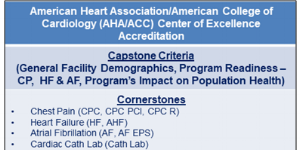A recent article on population health – Six Business Imperatives for Population Health Management[1] – caught our eye.
The article states that taking an organization’s population health capabilities to the next level requires leaders to rethink where, how and to whom their organizations provide services and which services are most appropriate, given the unique needs of the population they serve.
How well an organization actually achieves population health management depends upon the execution of the six business imperatives included in the table. The six are interrelated and interdisciplinary, crossing strategic, financial, clinical, operational and capital management domains:
|
Six Business Imperatives for Population Health Management
|
|
1
|
Physician and clinical integration
|
|
2
|
Contracting strategy
|
|
3
|
Network optimization
|
|
4
|
Operational efficiency
|
|
5
|
Enabling infrastructure
|
|
6
|
Clinical management
|
(Business Imperative Number 4 – Operational efficiency – is an area of great concern to every cardiovascular service line administrator and the issue we address in this blog post.)
The article states that while many hospitals have experienced success with cost management activities and reengineering patient care practices, additional – and much more challenging – operational issues have yet to be addressed. These issues include: “business restructuring” (e.g., rationalization of services, inpatient bed capacity, outpatient utilization and distribution of services, matching service provision to actual targeted population needs) and clinical effectiveness (e.g., reducing unnecessary variation, managing health across the continuum).
Cardiovascular Services Operational Efficiency
Many of these issues may not be the responsibility of many CV service line administrators; however, it is important that cardiovascular services operational efficiency be addressed, to the extent feasible, within the service line as a necessary precursor to larger, more interdisciplinary/interdepartmental issues. Simply, if the CV service line cannot adequately perform its function in the most efficient and effective manner possible, then operational efficiency issues will continue to present roadblocks to effective implementation of population health strategies for the hospital and system as a whole.
CFA has extensive experience and expertise in managing the cardiovascular service line, and assessing and identifying the myriad of issues that constitute cardiovascular services operational efficiency. When one looks at the issue, in its broadest terms, it is important that any assessment of operational efficiency focus on its component parts. Each part is important, yet interdependent and related. If one area is lacking, it will negatively impact all other areas over time.
We suggest operational assessment focus on the following broad general areas:
- Cost Management – Cost cutting, item master updates, matching standardization with resource consumption, reporting mechanisms for ongoing management.
- Utilization – Units of service, by subcategory, matched with available physical space, staffing and technology.
- Clinical Workflow – Interdepartmental and departmental processes and communications; staff efficiency and effectiveness; appropriate use of supplies and technology; clinical documentation; and, eventually, redesigning care provision to customize care for specific diagnostic groups across the care continuum.
- Education & Training – Staff levels of training, experience and competency; how staffing is utilized to maximize productivity; how staff may need to be re-deployed in the future.
- Best Practice Protocols & Standardization – Presence of standardized, consensus-based best practice protocols, systematically revised, monitored and performance reported.
- Cardiovascular Information Systems – Optimization of documentation, PACS and appropriate interfaces between physicians, staff, technology, CVIS and hospital EHR; completion of information for cardiovascular comparative databases and ongoing performance monitoring.
- Supply Chain/Inventory Management-Related Issues – Processes for evaluating, ordering, stocking and billing for supplies and equipment on a systematic, pro-active basis.
- Financial Performance – Ability of the service line to track and monitor financial as well as clinical performance inclusive of dashboards; price bundling.
- Other(s) – Culture, organizational structure, current state of physician/hospital alignment, trends in revenue growth, plans for expansion, patient experience, etc.
(The above list is an example; each cardiovascular service line possesses unique characteristics and operational challenges.)
Think of just some of the potential implications of the following requirements of a CV service line in an era of population health:
- Rationalization of CV services across multiple providers in a geographic region.
- Redistribution of inpatient versus outpatient capabilities and services to better match overall trends and the needs of targeted communities.
- Redistribution of services from existing providers to the lowest-cost provider.
- Specific care programs for targeted populations across the care continuum.
Given these examples, without control over the efficient provision of CV services that results in efficient and effective operations, it will be increasingly more difficult to address the challenges of business restructuring and care management/clinical effectiveness that will need to take place to successfully address population health management in the near-term future.
If you are interested in learning more about the operational assessment consulting services of CFA, please contact us at (949) 443-4005 or by email at CFA@charlesfrancassociates.com.

[1] Six business imperatives for population health management, Healthcare Executive, American College of Healthcare Executives, Volume 31, Number 4, July/August 2016.

